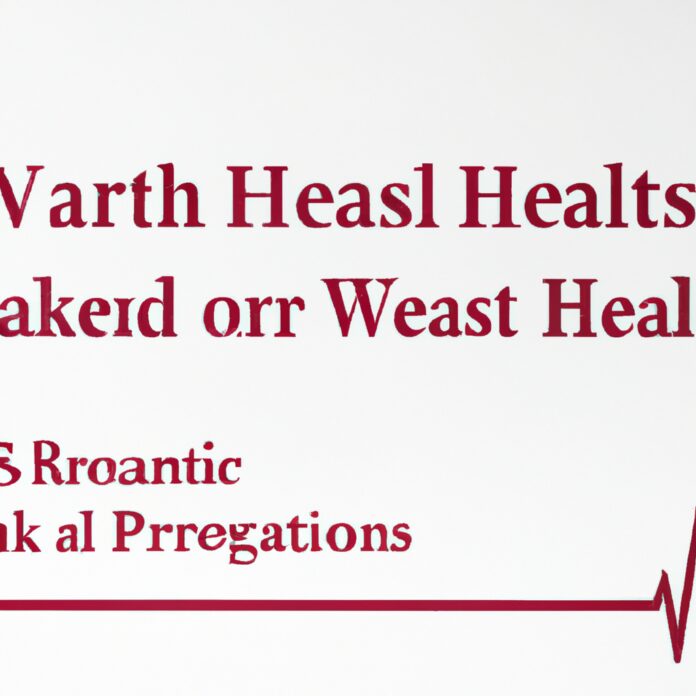When it comes to staying healthy, heart health is at the top of the list. However, did you know that women are often at a higher risk of developing heart-related issues than men? It’s true! For this reason, it’s important for women to become educated about the various risks associated with poor heart health and take steps to ensure their hearts stay healthy. In this article, we will explore the various factors that make heart health in women such an important topic and look at the preventive steps women can take to maintain their heart health.
1. Uncovering the Risk Factors behind Heart Disease in Women
The Women’s Health Initiative Reveals What You Need to Know
No longer is coronary heart disease (CHD) seen as a man’s affliction. An increasing number of women are being diagnosed with CHD year upon year. But what’s driving this sudden leap?
The truth of the matter is complex. In order to better understand the growing presence of CHD in women, the Women’s Health Initiative, a US-based project researching gender-specific data, conducted a survey between 1993 and 1998. Their research was multi-pronged, spanning various ages, ethnicities, conditions, and lifestyles. Questions included inquiries into everything from physical exercise to diets.
- High cholesterol was the most commonly observed risk factor in women.
- Smoking and diabetes were also found to be key risk factors.
- Age, hormones after menopause, and high blood pressure were also identified.
However, these factors weren’t the same for everyone. Low BMI’s and regular exercise could offset the risks in some cases, while women with a family history of CHD were more predisposed. The one factor which applied across the board was a need for lifestyle and dietary changes.
2. Taking Stock of Your Cardiovascular Health
One of the most important things you can do for your health is to take stock of your cardiovascular health. Knowing the signs of potential problems can help you take action early and protect your heart.
The first step in assessing your heart health is to measure your blood pressure. This is a good indicator of how well your heart is functioning, as well as your overall risk for disease. Most pharmacies offer free blood pressure screenings, and your doctor will take your blood pressure during your annual checkup.
Another important factor to consider is your cholesterol level. Cholesterol plays a role in heart disease and stroke risk. Your doctor will order a blood test to measure your cholesterol levels. The test should be done every five years.
- High-density lipoprotein (HDL)
- Low-density lipoprotein (LDL)
- Trigylcerides
Your doctor may also suggest other tests depending on your age and risk factors. These may include an exercise cardiovascular stress test, an electrocardiogram (ECG), and a coronary computed tomography angiography (CTA). You may also want to discuss lifestyle changes that could improve your heart health such as quitting smoking, reducing alcohol consumption, and taking up regular exercise.
3. Nourishing Your Heart with Heart-Healthy Habits
Your heart health is an important indicator of your overall wellbeing. Fortunately, there are many heart-healthy habits that you can adopt to keep your heart in good shape.
- Exercise is a key factor for maintaining healthy cardiovascular fitness. Taking regular walks, jogs or hitting the gym can help reduce cholesterol levels, but it also reduces stress by releasing endorphins.
- Eat healthy foods that are low in saturated fat, trans fat, and sodium. Eating fruits, vegetables, nuts and seeds can reduce the risk for heart attacks and other heart-related issues.
- Quit smoking. Smoking is one of the worst things you can do when it comes to protecting your heart. It increases your chances of developing coronary heart disease and stroke.
- Manage stress is another lifestyle choice that can make all the difference to your heart health. Taking regular breaks from your work to look after yourself with meditation, yoga, or other mindful activities can help reduce stress and improve your wellbeing.
These simple, heart-healthy habits can help keep your heart healthy and strong. You’ll be feeling better in no time and enjoying a healthier lifestyle.
4. Benefiting from Early Detection and Treatment
Early detection and treatment of cancer are among the most important strategies for improving the outcomes of cancer patients. By recognizing the signs and symptoms of cancer early on, those diagnosed can begin treatment much sooner, reducing the risk of disease progress and the time and money it would cost for later treatments. When caught early, cancers can sometimes even be treated entirely.
- Cancers caught early on are much easier to treat than those caught at a later stage, when the cancer may have developed further and spread to other parts of the body.
- The earlier you recognize that something is wrong and seek medical advice, the better your chance of a quick diagnosis and a more successful treatment.
Early diagnosis also allows patients to take advantage of treatments that may have fewer side effects, and it can even give them more options for treatment. Treatments such as surgery, radiation, chemotherapy, and immunotherapy, which may have been too drastic or expensive when the cancer has advanced, might be available and more tolerable if the cancer is caught early.
Early detection and treatment are the best ways to fight cancer, and its importance cannot be overstated. Cancers caught and treated early on can save lives. If you are paying attention to changes in your body or notice any unusual signs and symptoms, it is important to see your physician and get them checked out. Your health should come first, and early detection and treatment may be the best way to take care of it.
5. Advocating for Women’s Heart Health Awareness
Heart disease is the leading cause of death for women in the US today, yet it is often talked about less than men’s health. In order to bring more attention to women’s heart health, below are five steps that you can take to help raise awareness and help advocate for women’s heart health:
- Organize a Local Walk or Run – The more people who join in, the more funds can be raised to help fight heart disease and the more attention can be brought to the cause. At the same time, getting more people to exercise helps spread knowledge of the heart-healthy benefits of regular activities.
- Volunteer at a Health Event – Attend and help organize a health fair, free clinic, or other event focused on educating people about heart health and encouraging its practice. Also, help spread the word to people who may not have heard about the event.
- Wear Something Red – Red is the official “heart awareness” color. So, wearing something that is red can help spread the importance of women’s heart health and make it more visible to the public.
- Spread the Message– Use social media and other networks to help share information about women’s heart health. It may not work as quickly as other methods, but it can still help spread the message to a larger audience over a longer period of time.
- Write About Women’s Health on Your Website – If you own a website, consider devoting one of its pages to women’s health and heart health in particular. Many people turn to the internet for information they can’t find anywhere else. By having this page, you’ll be providing them with helpful and valuable information.
These are just a few of the ways that you can help advocate for women’s heart health and raise awareness. Each and every one of us can do something to help make sure that more people are knowledgeable about heart health and its importance.
It’s essential that women become aware of the risk factors associated with heart health and take the time to adopt preventive steps. Doing so can help enhance the quality of life for women – and those around them – for many years to come. Protect your heart – and your life – by making heart health a primary concern!





